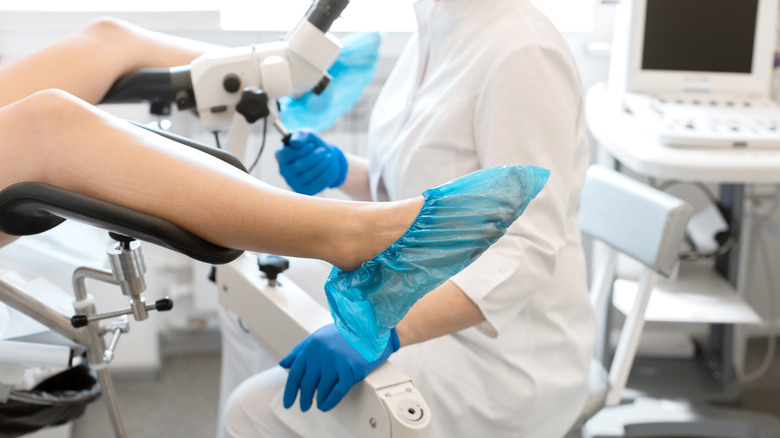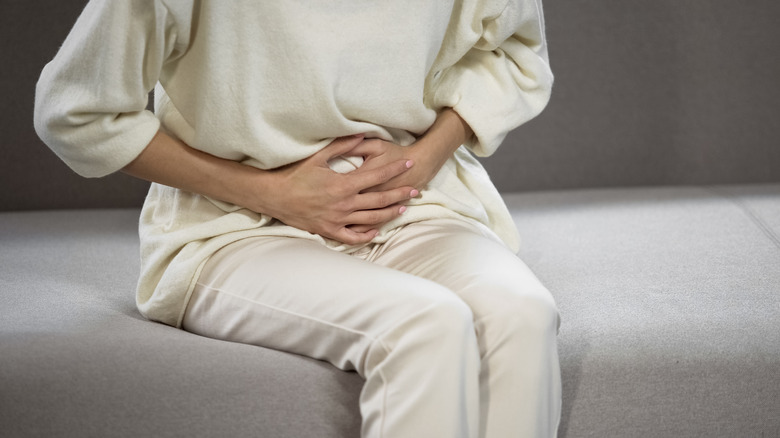Laser Therapy Is The Latest Tool That Can Combat Vaginal Dryness
Vaginal dryness, also known as vaginal atrophy or atrophic vaginitis, is a common issue for women as they age. According to the Cleveland Clinic, it is primarily due to decreased estrogen levels during and after menopause, though it can also occur due to breastfeeding or as a side effect of medication. This natural biological process marks the end of a woman's reproductive years and is typically defined as the absence of menstrual periods for 12 consecutive months, per the National Institute on Aging.
Vaginal dryness can lead to discomfort and pain during intercourse, exercising, and peeing and can also increase the risk of urinary tract infections. Fortunately, several treatment options are available, such as laser therapy. According to Healthline, this medical procedure uses a focused beam of light to treat a number of conditions. While it has been used for a variety of medical purposes, including the treatment of some gynecological issues, it is one of the latest tools to combat vaginal dryness.
How does laser therapy help combat vaginal dryness?
Information regarding the efficacy of laser therapy on vaginal dryness is still limited. However, several studies have revealed positive results. One 2021 study published in the journal Menopause found that women who underwent treatment using fractional CO2 laser therapy experienced significant improvement in vaginal dryness and overall sexual function. However, the study was small, with only 25 participants.
Harvard Medical School further explains that laser therapy for vaginal dryness involves using a specialized laser to stimulate the tissues in and around the vagina. The laser creates tiny areas of controlled damage in the vaginal tissues, which triggers a natural healing response. This response includes the production of new collagen, which can help improve the overall health and hydration of the vaginal tissues. While some studies have shown that laser therapy may be an effective treatment for vaginal dryness, more research is needed to determine its safety and long-term effectiveness.
What other options do I have for treating vaginal dryness?
Moisturizers and lubricants are two common treatments for vaginal dryness. The Mayo Clinic advises using them before sexual activity. The clinic says the moisturizers are more effective than lubricants, and you might have to apply them every few days. Systemic estrogen therapy is another viable option if you tend to get hot flashes. This treatment involves using estrogen, either as a vaginal gel or pill, to replace the estrogen your body is no longer producing. Topical estrogen therapy is another treatment option for vaginal dryness. This type of therapy involves applying estrogen directly to the vaginal area through creams, vaginal rings, or vaginal inserts (tablets or suppositories). This allows for localized treatment with lower blood absorption of estrogen compared to oral treatment.
Generally speaking, if you're unsure which route is best, be it topical, oral, or laser, it's best to talk to your doctor to discuss your symptoms and concerns. They can help you determine the best treatment course based on your needs and medical history.



